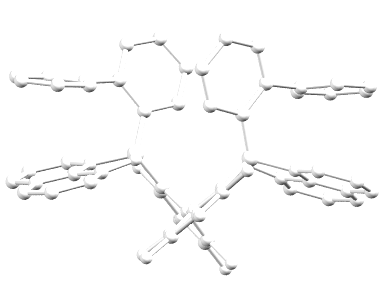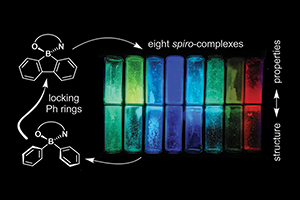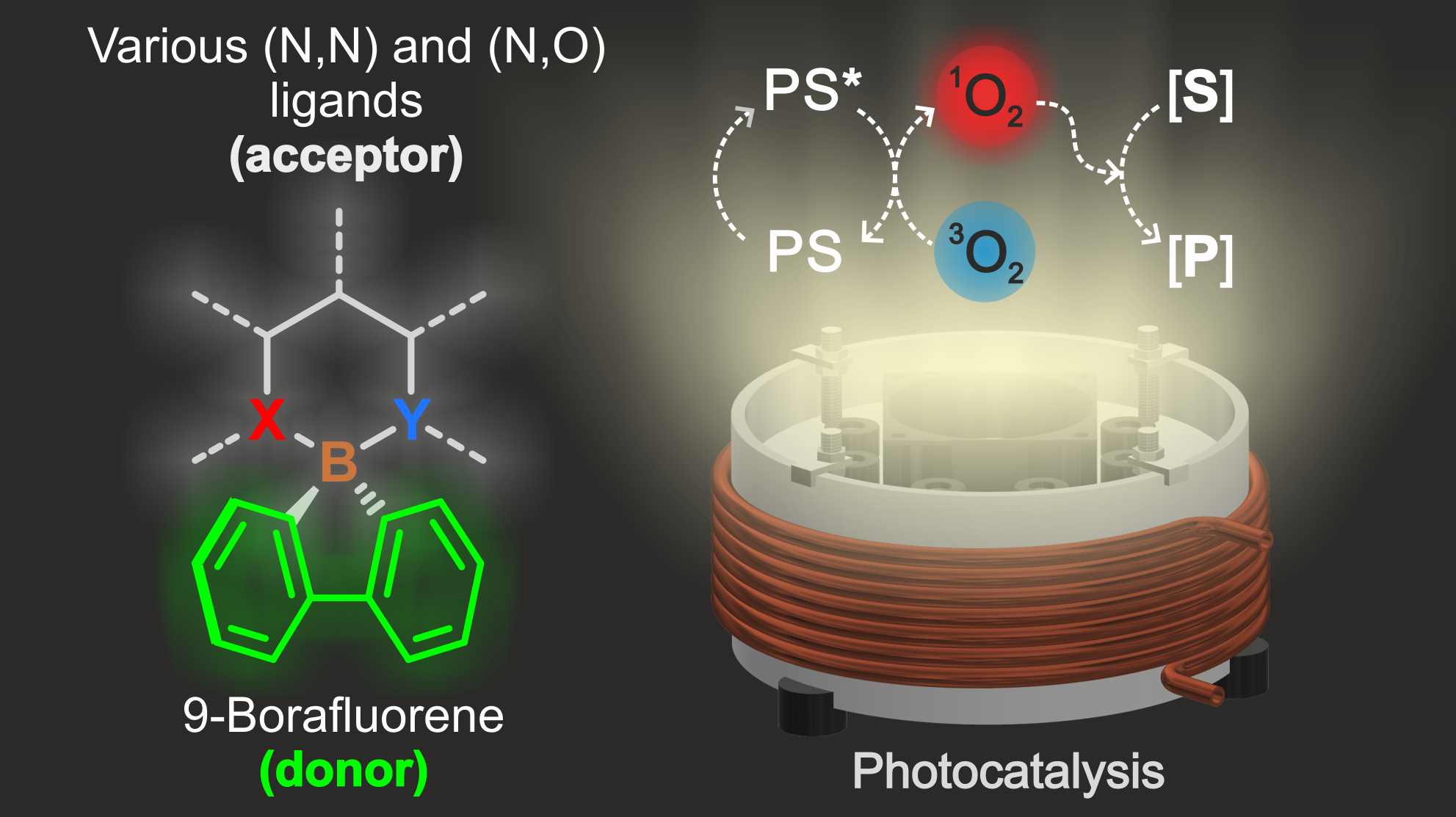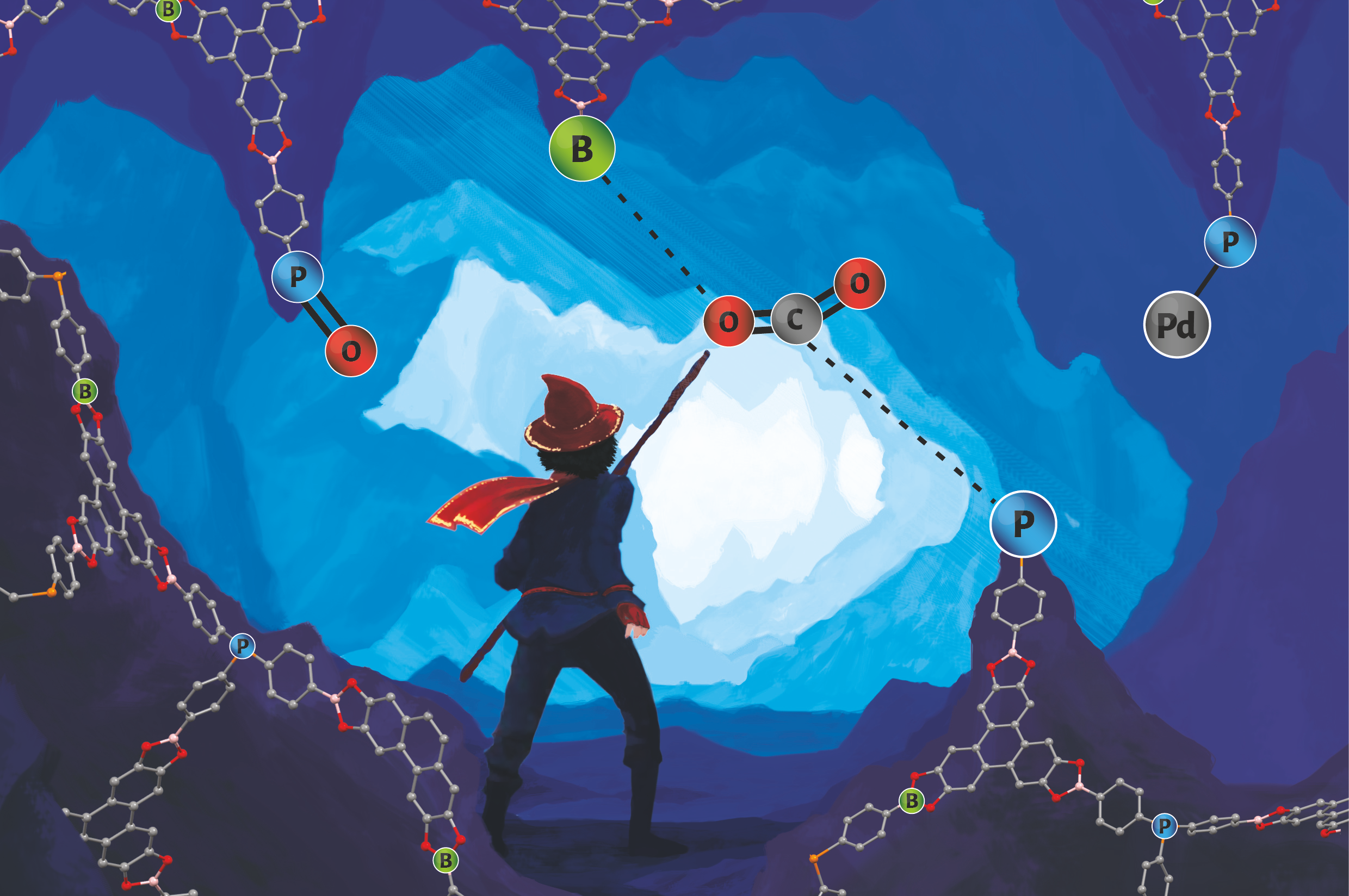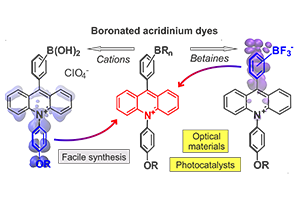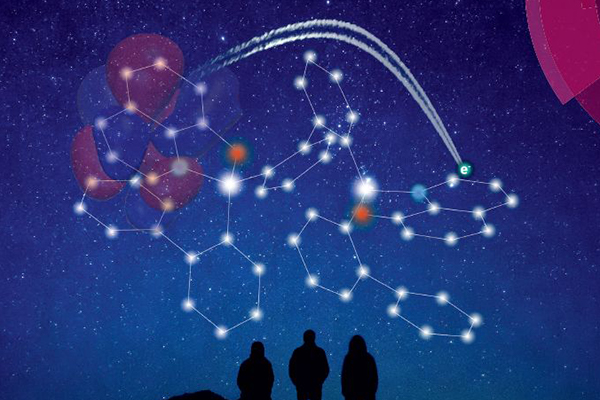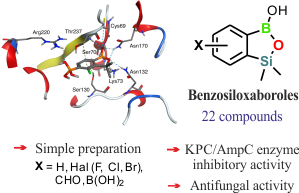Our field of interests
We investigate the chemistry of organoboron and main group organometallic compounds, starting from their design, synthesis, mechanistic studies to their applications in materials chemistry (luminescent systems, microporous materials) and medicine. We focus our particular attention on organoboron chemistry, but more recently we also extended our research towards silicon and phosphorus chemistry. We have also long-term experience in optimisation and scale-up chemical processes.
Research
Material chemistry
Luminescent compounds
We are looking for the novel efficient luminescence materials for the application in OLEDs. Specifically, we focus our attention on four-coordinate organoboron complexes that are based on rigid organic scaffolds.
moreAntimicrobial agents
We are developing new groups of heterocyclic compounds bearing boron, silicon and/or phosphorus atom. Examples includes benzosiloxaboroles, benzophosphoxaboroles and benzoxadiboroles – promising classes of small-molecule antimicrobial agents.
moreMicroporous materials
We concentrate our research on the design of novel functional materials featuring porous structure capable of storage or separation of technically and environmentally important gases. Particularly, these are Covalent Organic Frameworks, and recently hybrid systems incorporating metal atoms in their structures.
moreBasic research & technology
Crystal
engineering
We are interested in finding structure – energy - macroscopic properties relationships of crystalline solids to gain deeper knowledge of the design of new materials. We are interested in the solid structures of boronic acids putting special attention to hydrogen, halogen, and chalcogen bonds as well as other less specific intermolecular interactions.
moreSynthesis & mechanistical studies
We have developed new protocols for the synthesis and functionalization of organoboron systems. Mostly, we are using hydrogen/halogen-lithium exchange reaction followed by further reaction with electrophiles. These studies also includes evaluation of reaction mechanisms using both experimental and theoretical tools.
moreOptimisation & scale-up of chemical processes
Our laboratory is fully equipped for performing and optimization of a large-scale processes (up to 1-2 Kg of a product per one batch). We developed and performed about 1000 procedures for Sigma-Aldrich company.
morePublications
Projects
2019-2022 | Searching for structure – antimicrobial activity correlation for selected boraheterocycles
Narodowe Centrum Nauki, OPUS 16, Grant No. UMO- 2018/31/B/ST5/00210
The project deals with the synthesis and characterization of selected groups of heterocyclic compounds bearing the boron atom. It is focused on emerging systems such as benzosiloxaboroles, benzophosphoxaboroles and benzoxadiboroles. In all these compounds the boraheterocycle featuring the B-O-El linkage (El = Si, P, B) is fused with aromatic or heteroaromatic ring. The most important part of the project deals with the evaluation of the activity of obtained compounds as agents possessing a direct antimicrobial (antibacterial and antifungal) activity or as beta-lactamase inhibitors for use in combination with beta-lactam antibiotics for the treatment of Gram-negative bacilli infections. Moreover, the aim of this part of the research is the prevention of single-step resistant mutant selection leading to reduced bacterial sensitivity to the new compounds and characterization the selected mutants.
Years: 2019-2022
Donation: 431 600$,
PI: Sergiusz Luliński
Consortium grant with Medicinal University of Warsaw
2020-2023 | THIO-SWITCH: towards novel photo-active switchable materials - exploration of dithienylethene-based transition-metal complexes via advanced in situ photocrystallographic and spectroscopic approaches
Narodowe Centrum Nauki, OPUS 17, Grant No. UMO- 2019/33/B/ST4/03144
We concentrate on systems in which the molecule contains the dithienylethene (DTE) fragment that can work as two-direction switch using light of various wavelengths (DTE core can be found in two forms – open and closed – which can be transformed one into another). Such switching is often accompanied by the material’s colour changes or other properties (e.g. luminescence decay). The aim of our project is to better understand the switching process in transition-metal complexes containing the DTE group.
Years: 2020-2023
PI: Radosław Kamiński (WU) / Krzysztof Durka (WUT)
Consortium grant with Warsaw university
2020-2021 | Effective triplet-state photosensitizers based on four-coordinated spiro organoboron complexes immobilized on the solid state surface.
Warsaw University of Technology, POB-TM1
The aim of this project is to synthesise new types of singlet-oxygen photosensitizers derived from spiro-boracyclic semi-rigid complexes and their immobilization on solid-state materials.
Years: 2020-2021
PI: Krzysztof Durka
2019-2021 | Structure of chiral motif vs. spontaneous enantiomer crystallization - a case of lithium halides and biogenic amino-acids ionic co-crystals
Narodowe Centrum Nauki, PRELUDIUM 15, Grant No. UMO- 2018/29/N/ST4/00451
The aim of this project is to recognize and describe structural factors responsible for creating chiral motives in ionic co-crystal structures. This is to be achieved by obtaining well-defined consistent data-set, so called “structural library”, of ionic co-crystals composed of lithium halides and biogenic amino-acids of different chirality, and further meticulous analysis of the crystal structures supported by quantum-chemical calculations.
Years: 2019-2021
Donation: 210 000 PLN,
PI: Paulina Marek
2016-2019 | Covalent and hybrid porous materials based on organoboron compounds (finished)
Polish National Centre of Science grant “Opus” (Grant No. 2016/19/D/ST5/007352).
The project is primarily aimed at the design of novel functional materials featuring porous structure capable of storage or separation of technically and environmentally important gases.
Years: 2016-2019
Donation: 160 000$
PI: Sergiusz Luliński
2015-2019 | Four-coordinate organoboron complexes with rigid scaffolds as efficient light-emitting materials (finished)
Polish National Centre of Science grant “Sonata” (Grant No. 2015/19/D/ST5/007352).
The project is focused on the synthesis and characterization of luminescence complexes based on rigid organoboron core and selected (N,O), (N,N), (N,C) ligands.
Years: 2015-2019
Donation: 140 000$
PI: Krzysztof Durka
Contact
Faculty of Chemistry
Warsaw University of Technology
Department of Physical Chemistry
Noakowskiego 3
00-664 Warsaw, Poland
Prof. Sergiusz Luliński
phone: +48 22 234 7273
